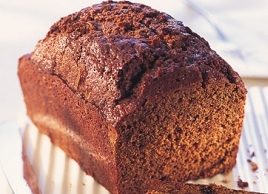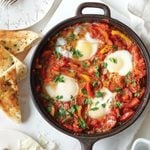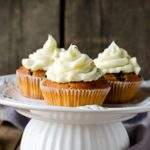Gingerbread
This delicious, lightly spiced gingerbread is hard to resist. Enjoy a slice with a cup of tea or try it for dessert, with custard or a little reduced-fat cream or plain yogurt plus, perhaps, a spoonful of fresh apple compote.
Source: Cook Smart for a Healthy Heart, Reader’s Digest Canada

| Servings | Prep Time | Cook Time |
| 10servings | 15minutes | 1 1/2hours |
| Servings | Prep Time |
| 10servings | 15minutes |
| Cook Time |
| 1 1/2hours |
- 1/2 cup dark brown sugar firmly packed
- 1/3 cup reduced-salt margarine
- 1/2 cup treacle
- 2/3 cup white all-purpose flour
- 2/3 cup whole-wheat all-purpose flour
- 1/2 cup rye flour
- 1 tsp baking soda
- 1 tbsp ground ginger
- 1 tsp mixed spice
- 2 eggs lightly beaten
- 2/3 cup low-fat milk
|
Ingredients
Servings: servings
Units:
|
- Preheat the oven to 325ºF (160ºC). Lightly grease a 23 x 13 cm (9 x 5 in.) loaf pan and line the bottom with parchment paper.
- Place the sugar, margarine and treacle in a medium saucepan and heat gently until melted and well blended, stirring occasionally. Remove from the heat and cool slightly.
- Sift the white, whole-wheat and rye flours, baking soda, ginger and mixed spice into a large bowl. Make a well in the centre and pour in the melted mixture, together with the eggs and milk. Beat together until smooth (the mixture will be very runny). Pour into the pan.
- Bake for 1 1⁄4–1 1⁄2 hours or until risen, firm to the touch and nicely browned. Leave the gingerbread to cool in the pan for a few minutes, then turn it out onto a wire rack to cool completely. Gingerbread can be kept, wrapped in foil or in an airtight container, for up to 1 week.
Per serving: 256 calories, 5 g protein, 9 g total fat, 2 g saturated fat, 44 mg cholesterol, 40 g total carbohydrate, 23 g sugars, 2 g fibre, 229 mg sodium
Compared with wheat flour, rye flour has much less gluten, which explains why rye breads such as pumpernickel tend to have a heavier texture. Rye flour contains high quantities of pentosans (long-chain sugars), which have a high water-binding capacity. Baked goods made with rye flour retain moisture, which means they swell in the stomach, giving a sensation of fullness.




